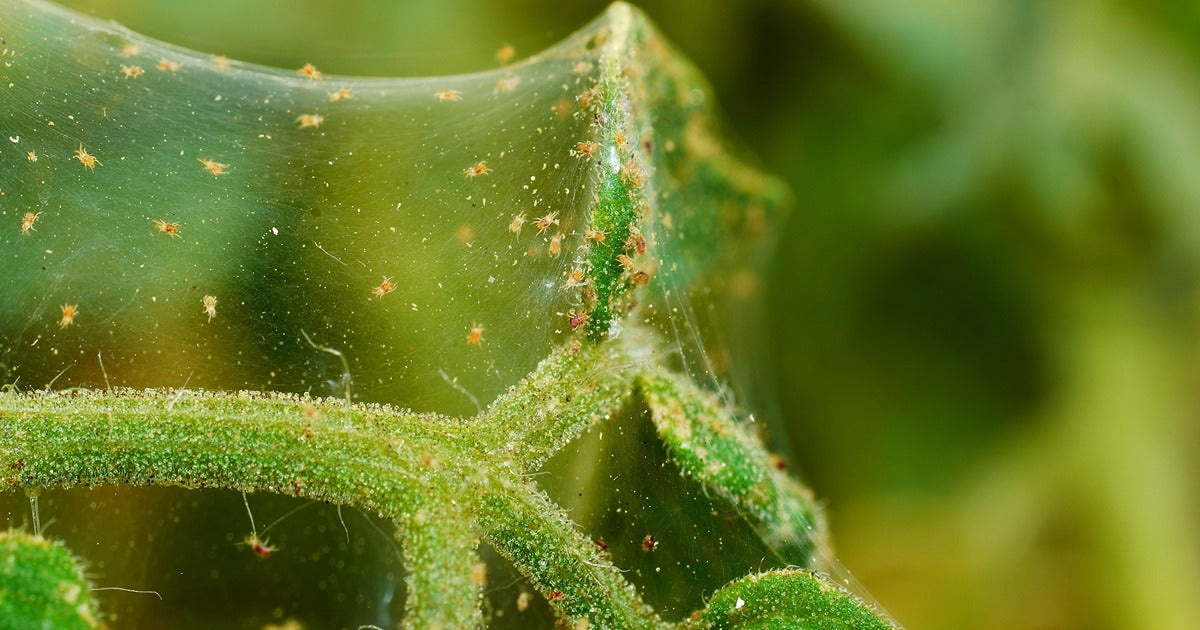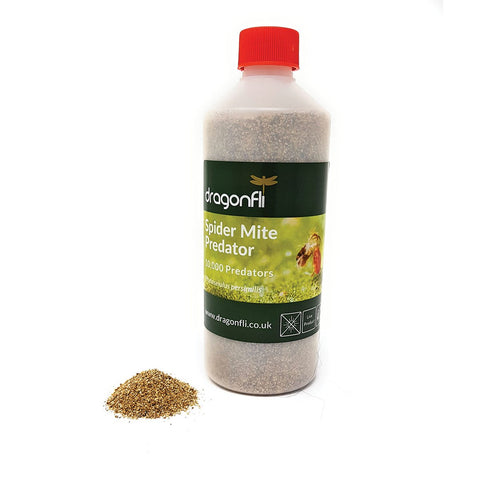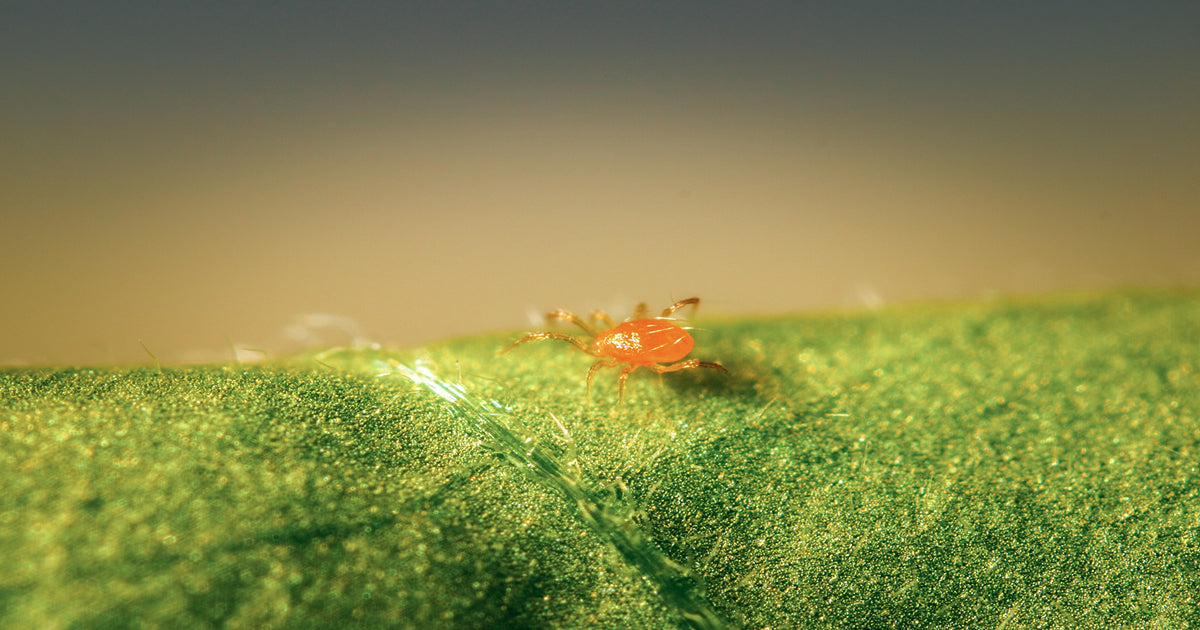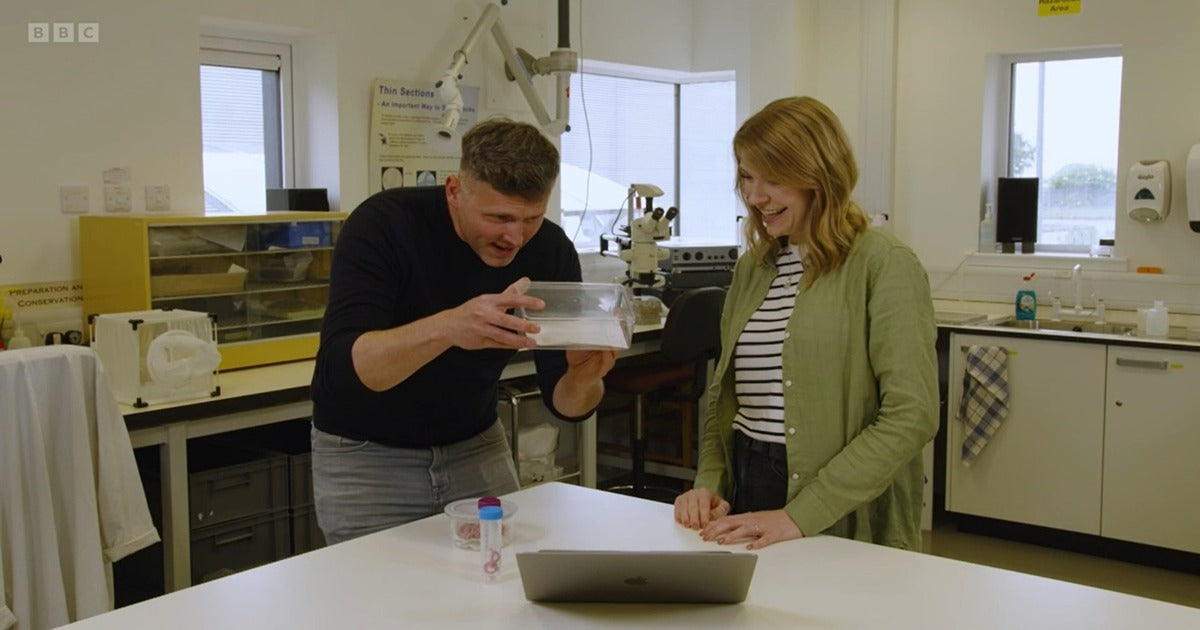
Spider Mites Feed On Plant Sap & Tissue, Killing Plants If Left Untreated
The Two Spotted Mite (Tetranychus urticae), more commonly known as the Red Spider Mite, can be a damaging pest to many crops and plants.
Spider Mites will often go unnoticed early in their development, and with increasing temperatures the pest population rapidly develops. These tiny mites feed on the plant sap and tissue, stunting and killing off plant growth.

Spider Mite can be missed early in their development but warm conditions can see their population increase rapidly.
Spider Mite Infestation Indicators
Infestations of Spider Mite will generally result in leaves turning yellow, as the chlorophyll is removed from the leaf. The appearance of the plants is ruined with the yellowing of leaves, but more significantly, in severe cases the loss of chlorophyll can kill plants completely.
In greater populations, Spider Mites will also produce webbing on the plants. These webs will contain huge numbers of the pest and are often used by the mites to move from plant to plant. This is achieved when the webs are blown around, or even when Spider Mites briefly attach themselves to the people working with the plants to hitch a ride!


The yellowing of leaves will evidence Spider Mite damage and webbing will become present if the pest population is large.
Control Spider Mite With Dragonfli Natural Predators, Not Insecticides
Attempted control of Spider Mite with insecticides is problematic. Spider Mites are very good at building up resistance to insecticides over quite a short period of time, and physical acting products generally only kill the adults. This leaves eggs free to hatch and develop, which means regular application of is required to break the life cycle.
A more effective and environmentally friendly control method is with the use of Spider Mite natural predators. Predators will eat the entire Spider Mite life cycle, from egg to adult, and the Spider Mites cannot become resistant to them. They are safe and easy to apply, and mean no harmful chemical residues will be left on the plant, or in the environment.

Natural predators consume all stages of the Spider Mite life cycle and offer an ecologically beneficial alternative to chemical insecticides.
The Best Predators To Use Against Spider Mite
Selecting the right predator to use, and knowing how to apply them, is critical to the success of your treatment. There are now several predator species available to growers and gardeners and we'll guide you on how to use and apply the top three.
1. The Number One Predator: Phytoseiulus persimilis
Phytoseiulus persimilis is the most effective Spider Mite predator if applied in the optimum conditions. The predators are supplied in shaker bottles, and should be sprinkled over your infested plants, ideally on areas rife with Spider Mite activity.
Our Phytoseiulus predators are supplied in shaker bottles. Select from our four unit sizes here.
Phytoseiulus breed quickly on plants, with faster egg laying than the Spider Mites, and they will begin feeding immediately on application. The predators consume the Spider Mite faster than all other available predators and will happily move into dense webbing to feed, which some of the other predators will not.


Phytoseiulus persimilis mites are the most effective Spider Mite predator. They breed faster than the pests and feed immediately when applied.
The Phytoseiulus mites do not, however, survive long without food and cannot be introduced before Spider Mites are present. They also require temperatures to be above 15°C to be active and are most active from 20-30°C, temperatures above this will reduce and stop their activity.
Introduce the predators after Spider Mite have been observed, and apply them close, or onto, the infected areas of the plant. In high infestations, repeated applications may be required to build up their numbers to a level where they will outcompete and completely control the Spider Mite.
2. The Best Predator For Preventative Applications: Amblyseius californicus
Amblyseius californicus is also an effective predator of Spider Mites and can be introduced at lower temperatures than the Phytoseiulus. The californicus can also survive without Spider Mites for a prolonged period of time and can feed on pollen. This enables them to be introduced earlier and before Spider Mite appear. Their activity starts from temperatures over 10°C up to about 33°C.
They are available in bottles, or breeder sachets, that can be hung on plants, releasing predators over a period of weeks. They can be combined with Phytoseiulus for an effective bio control programme.


Amblyseius californicus predators can be released from our breeder sachets. Hang these from your plants and enjoy prolonged and preventative control over Spider Mite.
3. A Predator To Use In Cooler Conditions: Amblyseius andersoni
There is also another biological alternative in the form of Amblyseius andersonipredators. This predator is active at the lowest temperatures of the three mentioned predators. Andersoni predators are active from 6°C and will continue working at the highest temperatures of 40C.


Amblyseius andersoni predators are capable of withstanding lower and higher temperatures than alternative Spider Mite predators.
Andersoni mites are most effective when there are low numbers of Spider Mite present on plants, and when temperatures are too cold for our other predators. Andersoni does not like feeding on Spider Mites in high numbers and will not venture into any webbing. Andersoni applications should be combined with Phytoseiulus in warm conditions, when there are higher numbers of Spider Mites.
A Summary On How To Control Spider Mites
Introduce Amblyseius californicus sachets as early as possible in the growing season. Each sachet will release hundreds of predators over a period of about 4 weeks. If Spider Mite populations are low, or not present, continue regular introductions throughout the growing season.
Always introduce Phytoseiulus persimilis predators if Spider Mite infestations are worsening or if there are high numbers of the pest. Ensure to introduce Phytoseiulus only when temperatures are above 15°C, and when Spider Mites are present. Keep repeating applications until the predators are easy to observe on the plants.


Introduce our Amblyseiys californicus sachets to prevent and combat small scale infestations. Use our Phytoseiulus persimilis predators to quickly fend off large scale infestations.
Find our full range of available Spider Mite control products here.
Comments (16 Responses)
Clarence Hannah
I have a tent 6×6×10 i grow 4 to 6 my spider mite go from 1to infantation in 3 Days what is the best I can get that is affordable and efficient enough to read them from my small space
Julian Ives
Hi Megan,
Many thanks for getting in touch.
If you are referring to the ‘SMC Spider Mite Control Spray’, the description of this sounds like a physical acting spray, rather than a poison, so it should be ok to use predators once the spray has dried.
Please don’t use the spray once the predators are on the plant, however.
I hope this helps but if you need any further assistance please just let us know.
Kind regards, Julian Ives [Director, Dragonfli]
Megan Kirk
Hi is the spider mite control spray ok to use alongside live predator sachets, if not how long should I wait before using the sachets, also how long can I wait as the sachets arrived today but I also sprayed today. Many thanks for any help
Julian Ives
Hi Rebecca,
Many thanks for getting in touch.
I do regret to inform you, however, that we are only able to ship our products across the United Kingdom at present.
I hope you’re able to source what you’re after and thank you for taking an interest in our business and product range.
Kind regards, Julian Ives [Director, Dragonfli]






07 April, 2025
Julian Ives
Hi Clarence,
Many thanks for getting in touch.
Sorry to hear of your infestation. I would suggest, if you are looking to swiftly counteract your infestation in your small space, that our Phytoseiulus persimilis predators are your best bet.
These are our most effective Spider Mite predators, capable of consuming five adult Spider Mites and 20 Spider Mite larvae each day. You can apply these predators by sprinkling them our bottles or by hanging our Spidex Vital Plus sachets from your plants. You might find that our bottles are more suitable if you are looking for an immediate resolution to a significant infestation as these will release larger quantities of predators immediately to your plants.
I hope this all helps but of course if you need any further assistance please don’t hesitate to reach out again and we’d be more than happy to help.
Kind regards,
Julian Ives [Director, Dragonfli]